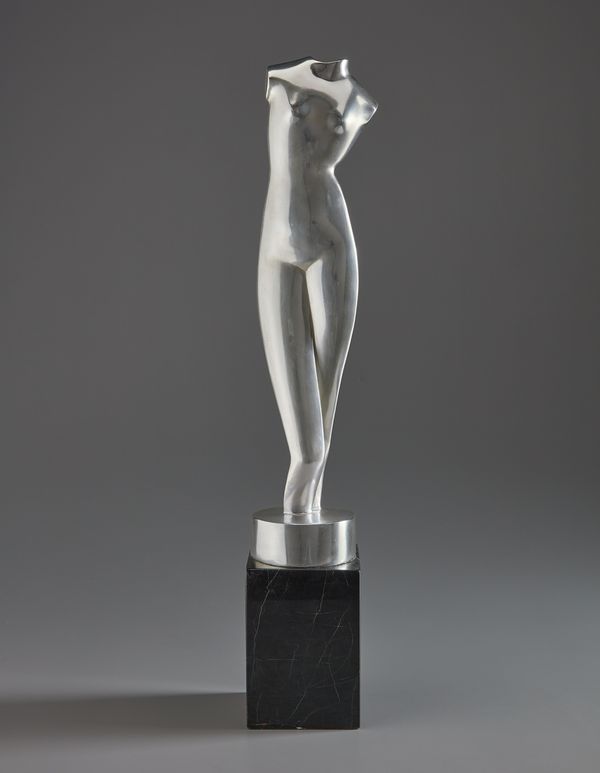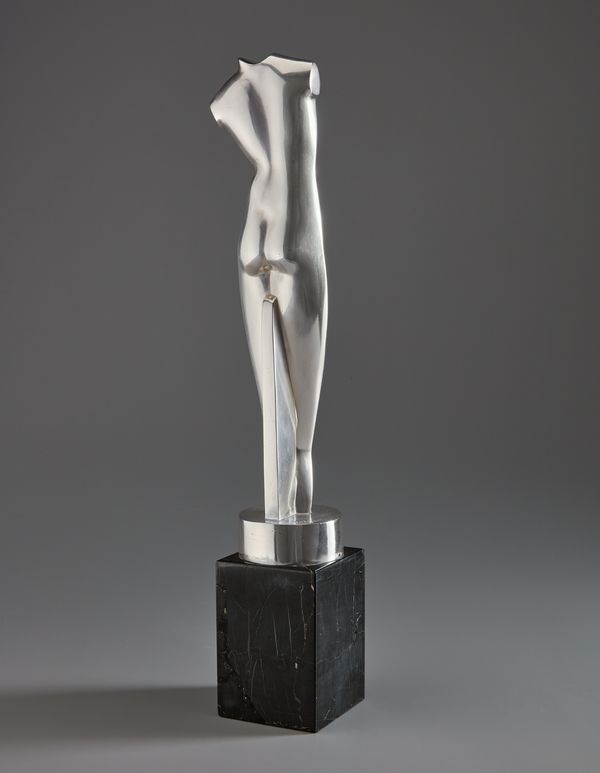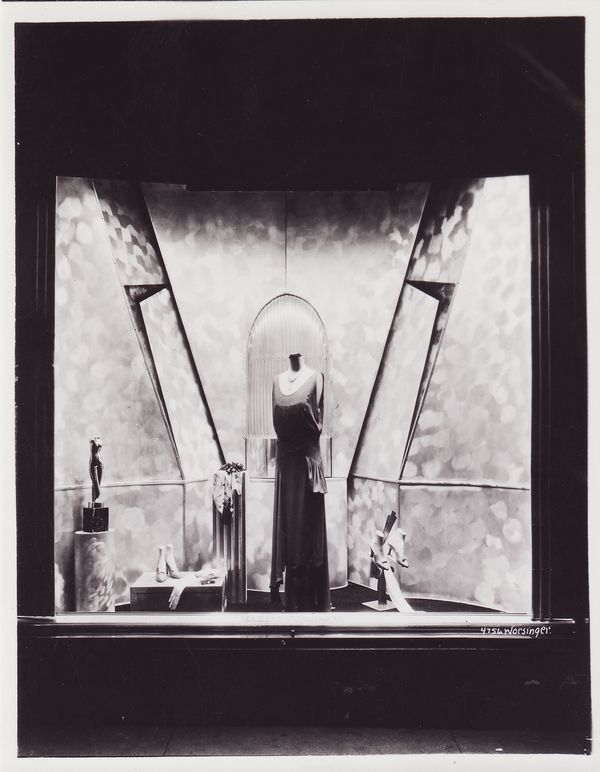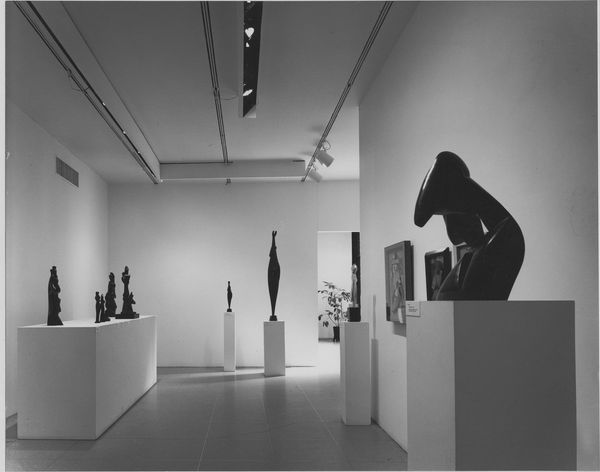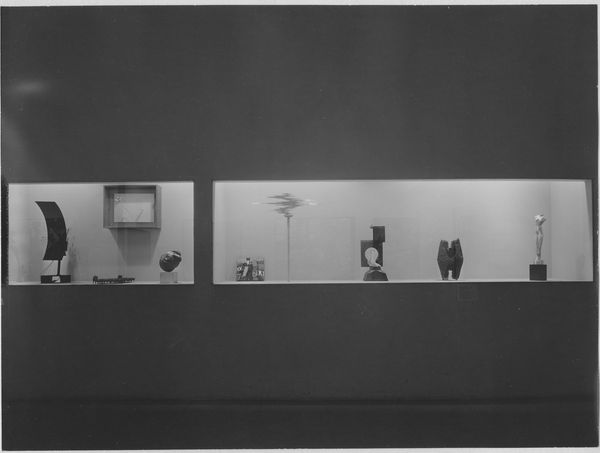Alexander Archipenko White Torso, conceived in 1916, executed in silvered bronze circa 1920. Stamped "Archipenko...T FDRY NY" on the base.
Alexander Archipenko's Parisian years, from 1908 to 1921, are often cited as his most productive and important. His White Torso, cast circa 1920, after the original marble version executed in 1916, is a seminal example of the artist's achievements in the plastic arts from this formative moment in his career, during which he was recognized as "one of the most innovative and prolific of a new generation of sculptors…in the post-Rodin 'modern' phase of the history of sculpture," as was posited in a 1981 exhibition catalogue for Tel Aviv's Archipenko: The Early Works: 1910-1921.
In the early 1920s, Archipenko turned away from the elaborate convex-concave configurations of his earlier cubist figures and sculpto-paintings, creating a new sculptural mode that synthesized elements from Cycladic, Hellenistic, Egyptian and Gothic forebears. Donald H. Karshan wrote in 1985 that "White Torso [was] Archipenko's first known attempt at emulating and further refining through avant-garde reduction the syntax of Hellenic sculpture and its fragmentation, an investigation to which he would periodically return in subsequent years."
In this way, White Torso is emblematic of Archipenko's more simplified and reductionist classical impulses. The slight bend of the knee, sweeping up the leg to the hip, counterweighted against the precarious tilt of the shoulders, the delightful bend at the waist and even the slight angle of the neck all coalesce into a wonderfully balanced figure. Such a superbly executed form as White Torso is an exemplary representation of Archipenko's sculptural innovations in the first quarter of the 20th century. Katherine Kuh wrote for the Museum of Modern Art, New York in 1970 that, "Relying on the human body, preferably the female nude, as his point of departure, Archipenko constructed his figures with architectural precision, yet rarely sacrificed the rhythms of nature. His idealized women have the elongated elegance we sometimes associate with undulating plants, sometimes with those Gothic saints which echo the soaring churches they decorate."
...one of the most innovative and prolific of a new generation of sculptors…in the post-Rodin modern [world]
Another example of White Torso installed as part of a commissioned window display by Alexander Archipenko for Saks Fifth Avenue, New York in 1929 © 2017 Estate of Alexander Archipenko / Artists Rights Society (ARS), New York.
White Torso entered the collection of The Museum of Modern Art in 1961 as a gift of Mr. and Mrs. Murray Thompson. Mr. Thompson's mother was Mrs. Maud Murray, the first Mrs. Chester Dale, and herself a Chevalier of the Legion of Honor in recognition of her interest in and scholarship on French art. Chester Dale served on several museums' boards of trustees during his lifetime, beginning with MoMA in 1929, the year it opened, and many others including the National Gallery of Art in Washington, D.C, where he served as president from 1955 until his death.
Maud and Chester Dale amassed hundreds of works, eventually donating some 250 paintings, sculptures and drawings to the NGA. The Dales' collection of French and American art from the late 19th and early 20th centuries was considered to be the country's most important, and was among the most transformative gifts to the NGA of its time.
The present work installed at The Museum of Modern Art for Archipenko: The Parisian Years, July 20 – October 18, 1970 © 2017 Estate of Alexander Archipenko / Artists Rights Society (ARS), New York.
The present work installed at The Museum of Modern Art for Recent Acquisitions, December 19, 1961 – February 25, 1962 © 2017 Estate of Alexander Archipenko / Artists Rights Society (ARS), New York.
Following in the esteemed example set forth by his mother and step-father, Murray Thompson donated this particular lot, Archipenko's White Torso, to The Museum of Modern Art in 1961. Distinguished by an exhibition history that includes MoMA's major 1970 travelling exhibition, "Alexander Archipenko: The Parisian Years," this early bronze cast is further enhanced by the treatment of the surface: a polished silver reminiscent of the Art Deco style of the day.
The artist's use of bright plating during the early twentieth century is noted as one of his most important sculptural innovations, endowing, as Karshan wrote, "…the appearance that the reflected light is in motion."
